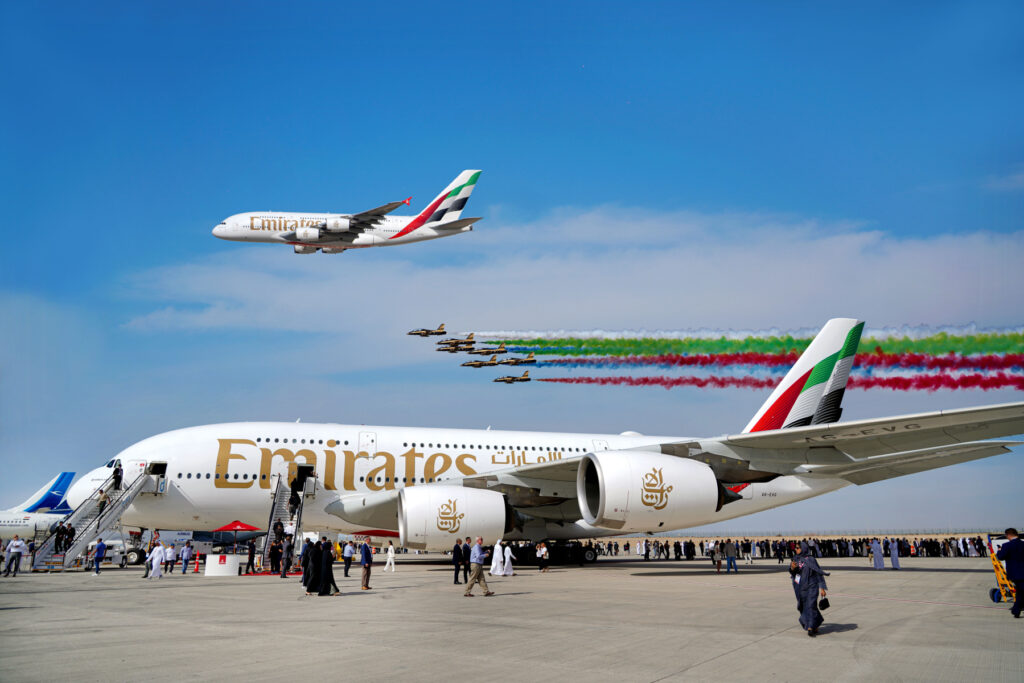
Emirates headlines the Dubai Airshow’s spectacular opening flypast formation
The Voice of Chandigarh :
Flying the flag for UAE aviation, the stunning opening flypast at Dubai Airshow 2023 once again showcased the nation’s capabilities with Emirates headlining the commercial aerial formation.
The iconic Emirates A380, the world’s largest commercial passenger aircraft, was first in the aerial formation, followed by the UAE’s air display team, Al Fursan flying in V formation and trailed by their signature red, green and black smoke trails. An Emirates Boeing 777 was next in formation, followed by an Etihad Airbus 350, an Air Arabia Airbus 320 and a flydubai Boeing 737, soaring through the skies and delighting spectators and passionate aviation enthusiasts.

Soaring over the Dubai World Central (DWC) runway, the Emirates A380 flew at an altitude of just 100 meters, which is almost equal to the wingspan of the legendary double-decker jet. The Emirates Boeing 777 followed at an altitude of 160 meters. Both aircraft carried Emirates’ new signature livery, providing an in-motion view of the modern and dynamic branding.
A fleet of military aircraft and helicopters also joined the formation.
The aerial display was co-ordinated by teams across the aviation ecosystem. The Flight Operations team overseeing the Emirates part of the aerial display included Captain Michael Schreiber, the airline’s Chief Pilot Technical Operations, as well as Captain Khalid Akram, Deputy Chief Pilot Boeing. At the head of the formation flying the A380 were Captain Mubarak Al Mheiri, Captain Chris Gauchi and Captain Khalid Binsultan, while Captain Dave Kilian, Captain Ali Almarzooqi and Captain Ali Alyafei, commanded the Boeing 777.
The impressive aerial feat follows months of thorough and cross-functional planning between stakeholders including multiple teams at Emirates and the other UAE carriers, the UAE Ministry of Defence, UAE Military, Emirates pilots, Flight Operation Managers and Air Traffic Controllers working together with the Dubai Air Show Flying Control Committee and both aviation authorities (DCAA and GCAA). The teams worked together across every element of the aerial display, taking into account air traffic patterns at different times of the day, areas over flown, in addition to weather and wind conditions.
